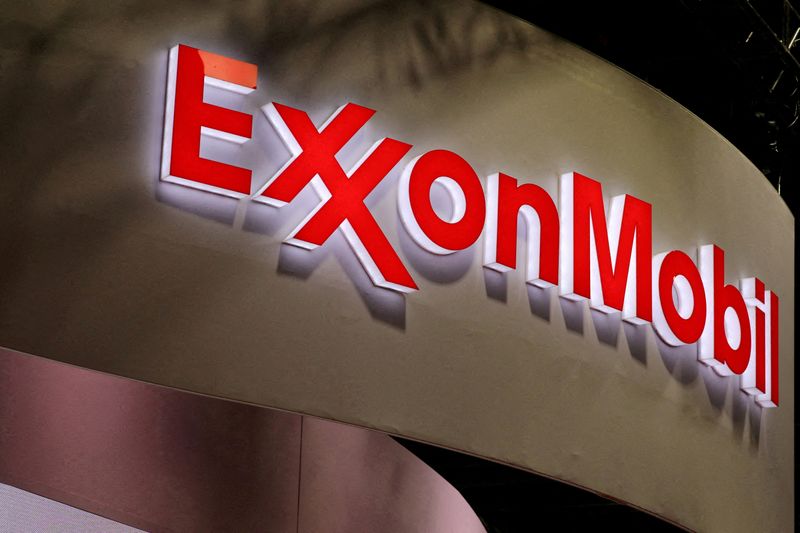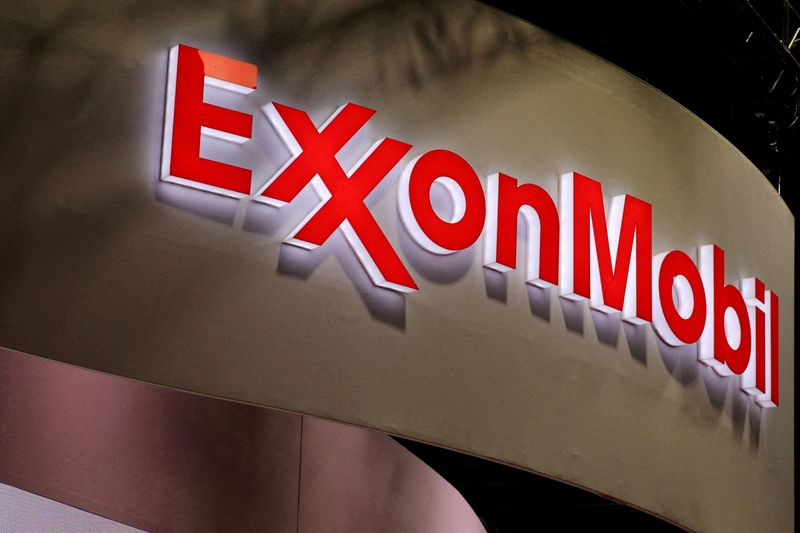Commodities
Exxon Mobil signals second-quarter earnings hit from refining margins, natural gas prices

By Tanay Dhumal
(Reuters) -Exxon Mobil said on Monday lower prices and refining margins are expected to hit the oil major’s second-quarter earnings.
The oil major would be reporting its first earnings after closing the acquisition of Pioneer Natural Resources (NYSE:) for $60 billion, with the combined operations making it the largest oil producer in the Permian basin.
Exxon (NYSE:) said changes in gas prices could decrease its quarterly upstream earnings by $300 million to $700 million compared with the first quarter.
Natural gas prices had fallen in the reported quarter hurt by lower demand forecast, high output and excess inventories.
However, higher crude prices helped undercut this weakness, with Exxon expecting oil earnings to rise by at least $300 million.
The company’s first-quarter total upstream earnings stood at $5.7 billion.
Exxon also said lower refining margins would have a negative impact on second-quarter profit of between $1.1 billion and $1.5 billion compared with the prior quarter.
The oil major said in its earnings snapshot the Pioneer acquisition would add between 500,000 and 550,000 barrels of oil equivalent per day to its second quarter production, compared with the first three months of the year.
Shares of Exxon, which have gained about 13% so far this year, were down 1.3% in pre-market trade.

“QoQ earnings are set to be impacted by lower refining margins, which should be expected. Further, we note the hit from gas prices, as well as the earnings contribution from Pioneer were worse than we had modeled,” said Biraj Borkhataria, analyst at RBC Capital Markets.
Analysts expect the company to post an adjusted per share profit of $2.37, according to LSEG’s consensus estimate.
Commodities
Oil prices rise; U.S. crude inventories plunge, Russia-Ukraine truce eyed
Commodities
India’s Reliance to stop buying Venezuelan oil over US tariffs, sources say
Commodities
Oil prices climb on Venezuela supply worries

 Forex3 years ago
Forex3 years agoForex Today: the dollar is gaining strength amid gloomy sentiment at the start of the Fed’s week

 Forex3 years ago
Forex3 years agoUnbiased review of Pocket Option broker

 Forex3 years ago
Forex3 years agoDollar to pound sterling exchange rate today: Pound plummeted to its lowest since 1985

 Forex3 years ago
Forex3 years agoHow is the Australian dollar doing today?

 Cryptocurrency3 years ago
Cryptocurrency3 years agoWhat happened in the crypto market – current events today

 World3 years ago
World3 years agoWhy are modern video games an art form?

 Commodities3 years ago
Commodities3 years agoCopper continues to fall in price on expectations of lower demand in China

 Economy3 years ago
Economy3 years agoCrude oil tankers double in price due to EU anti-Russian sanctions























